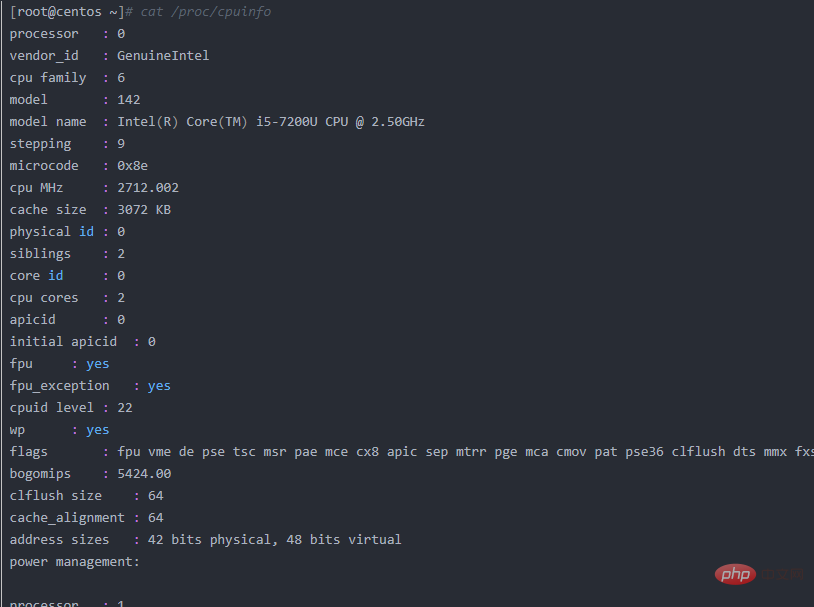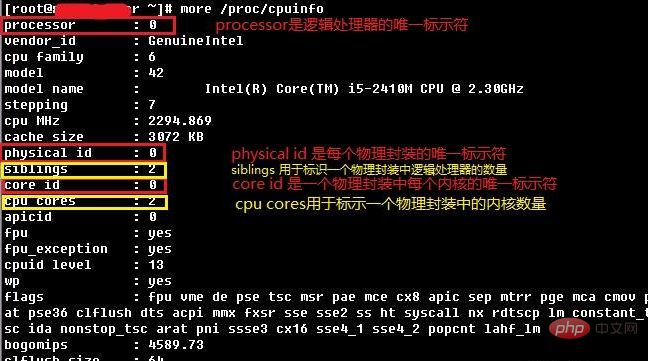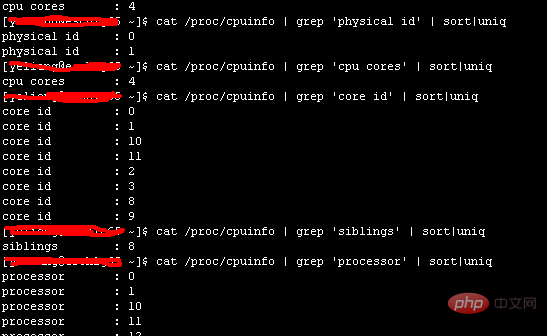
In centos, you can use the cat command to check the CPU usage. The function of this command is to connect files and print them to the standard output device. The syntax is "cat /proc/cpuinfo".

The operating environment of this article: centos 6.4 system, Dell G3 computer.
The example is as follows:


This picture is the server The detailed running status of the CPU focuses on understanding the number of CPUs, how many cores, whether it supports hyper-threading, etc. In the picture, we mainly look at the fields of processor, physical id, siblings, core id, and cpu cores.
1. All logical processors with the same physical ID share the same physical socket. Each physical id represents a unique physical package, that is, a CPU.
2.Siblings represents the number of logical CPUs located on a physical packaged CPU.
3. Each core id represents a unique processor core, and all logical CPUs with the same core id are located on the same processor core.
4. If there is more than one logical CPU with the same core id and physical id, it means that the system supports hyper-threading (HT) technology.
5. If there are two or more logical CPUs with the same physical id but different core ids, it means that this is a multi-core processor. The cpu cores field can also indicate whether multi-core is supported. .
You can query the CPU status through the following methods.
1. Number of logical CPUs:
cat /proc/cpuinfo | grep “processor” | wc –l
2. Number of physical CPUs:
cat /proc/cpuinfo | grep “physical id” | sort | uniq | wc –l
3. Number of cores in each physical CPU:
cat /proc/cpuinfo | grep “cpu cores” | wc –l
4. Does it support hyper-threading? If two logical CPUs have the same "core id", then hyperthreading is turned on.
5. The number of logical CPUs in each physical CPU》
cat /proc/cpuinfo | grep “siblings”
6.The physical ids are all 0, indicating that there is only one physical processor
7.processor has Two different numbers, and both belong to the same physical ID, and the value of cpu cores is 2, which means that the CPU is dual-core, and each core has only one logical processor.

Recommended tutorial: "centos tutorial"
The above is the detailed content of How to check CPU usage in centos. For more information, please follow other related articles on the PHP Chinese website!